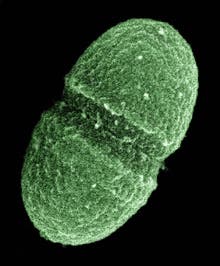By creating this microbiome catalog, researchers hope to figure out the complex interactions between the countless microbes in our bodies and our immune system.
As many already know, germs are not always bad for you – in fact, they are sometimes necessary for a healthy body. But regardless how careless or careful you are with your hygiene, you are carrying with you everyday at least 10,000 species of microbes, weighing a few kilograms, which is actually very little, considering their cells outnumber ours by ten to one.

But the next step is what really puzzles doctors and researchers: why do these bugs harm some people and others not? What changes a person’s microbial fauna so much that it puts them in a risk for infection?
This is a whole new way of looking at human biology and human disease, and it’s awe-inspiring,” said Dr. Phillip Tarr of Washington University at St. Louis, one of the lead researchers in the $173 million project, funded by the National Institutes of Health. “These bacteria are not passengers,” Tarr stressed. “They are metabolically active. As a community, we now have to reckon with them like we have to reckon with the ecosystem in a forest or a body of water.”
You should thank the 100 of trillion of bacteria in your body for good health!
Also, pretty much like with every other ecosystem, your body’s microbial fauna varies depending on your body part. Metaphorically speaking, your skin could be like the rainforest, while your gut could harbor species like an ocean.
Scientists have long know that trillions and trillions of microbes live inside of us, but what they haven’t known so far is that all these types of symbiotic-like and harmful microorganisms coexist in and on our bodies. Some 200 scientists from nearly 80 research institutions worked together for five years on this first-ever census to begin answering those questions by unraveling the DNA of these microbes, with some of the same methods used to decode human genetics.
“We are essentially blind to many of the services that our microbial ecosystems provide — and on which our health depends,” wrote Dr. David Relman, a Stanford microbiologist.
The next step, he said, is to better understand how the microbiome affects health and disease and to try to improve health by deliberately altering the microbiome. The researchers’ findings were published in the journals Nature and three PLoS journals.


